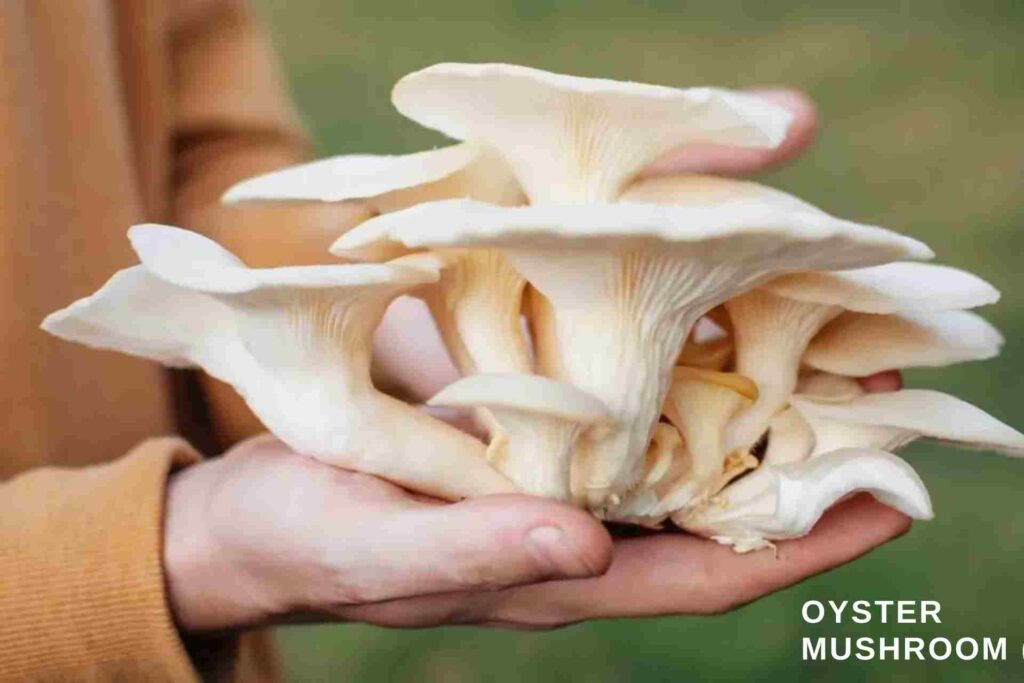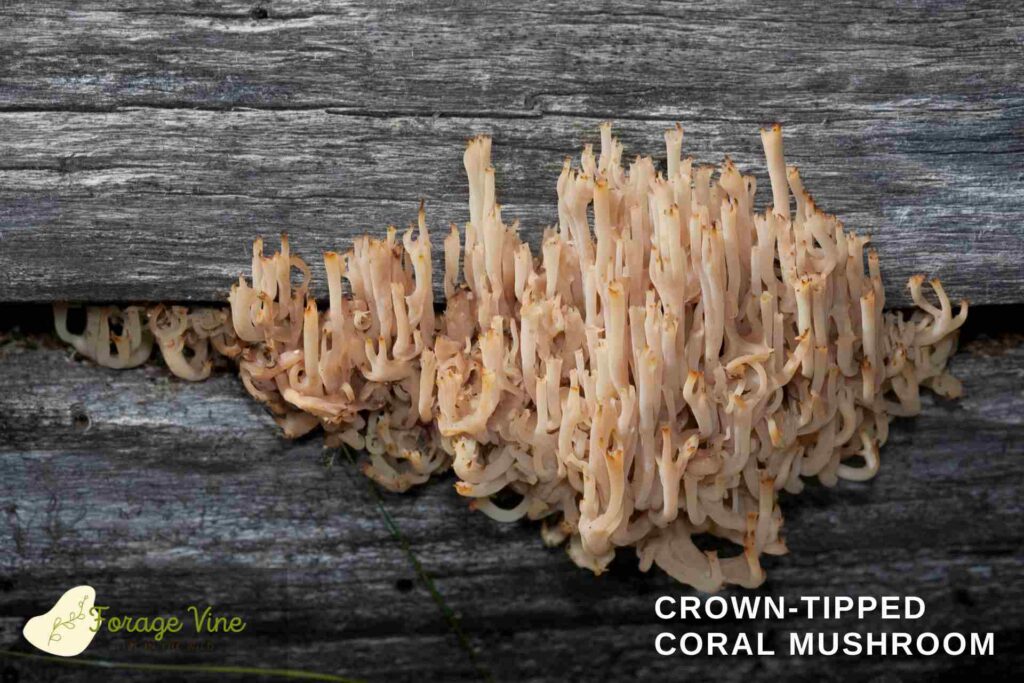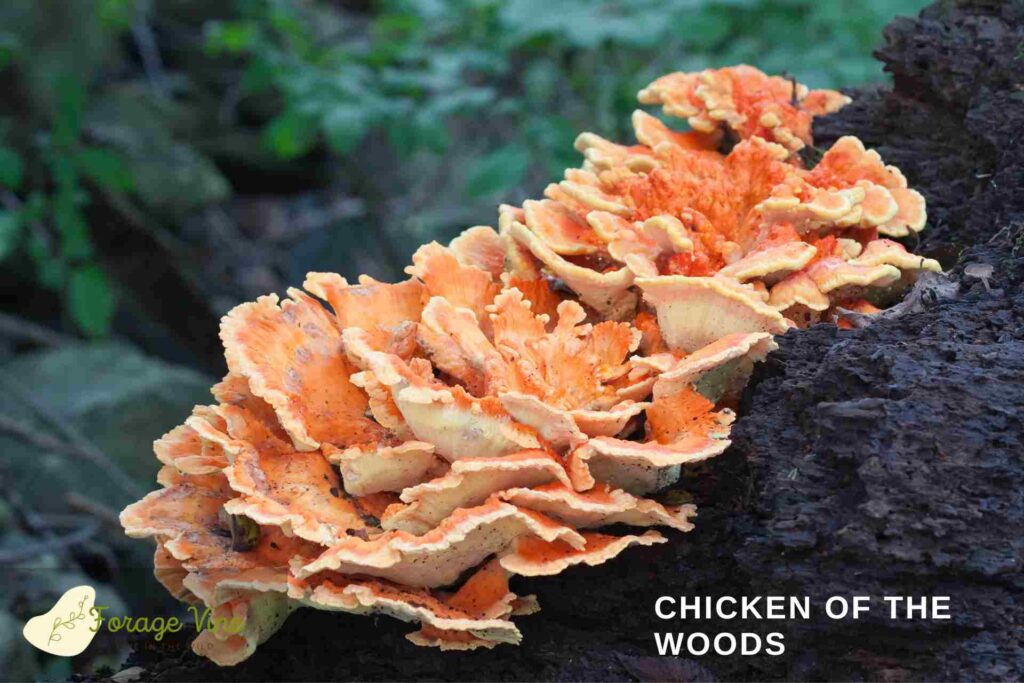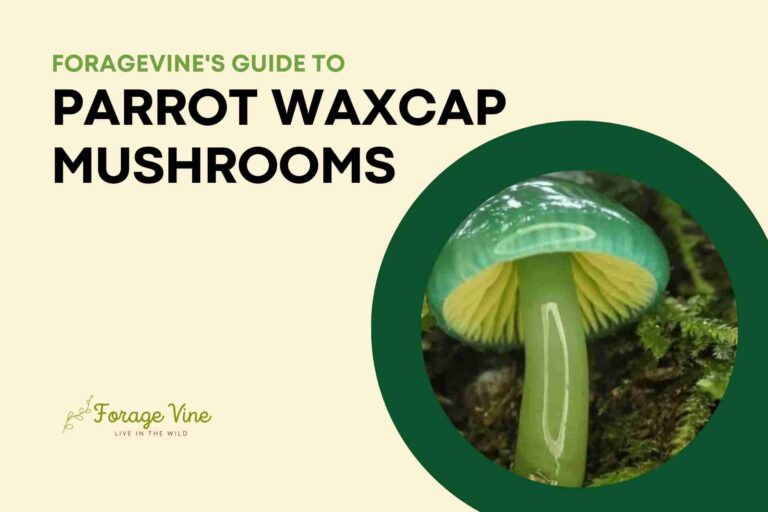ForageVine’s Guide to Wild Edible Mushrooms in Alabama
Alabama is home to various wild and commercial varieties of edible mushrooms. Whether you’re looking for a delicious snack or an exciting addition to your dinner plate, Alabama has something for everyone. In this article, we’ll explore some of the more popular edible mushrooms found in Alabama and explain how to identify them correctly.
We’ll also discuss where they can be found and tips on safely harvesting these tasty treats.
So if you’re ready to discover the wonderful world of edible mushrooms in Alabama, let’s get started!
Wild Edible Mushrooms in Alabama
Cauliflower Mushroom (Sparassis Crispa)
The Cauliflower Mushroom (Sparassis Crispa) is a unique fungus that grows wild in the woods of Alabama. It is among the state’s most popular edible mushroom species due to its striking appearance and savoury taste.
The Cauliflower Mushroom is a bracket-like fungus that grows from the common edible mushrooms found in Alabama, including their characteristics, identification tips, and potential health risks. We will also discuss properly those looking to forage for edible mushrooms in the state.
Harvesting Techniques for The Cauliflower Mushroom
When foraging for the mushroom, it’s important to be aware of its natural habitat, as they are usually found growing in clusters on dead wood or stumps of hardwood trees such as oak or hickory.
Morels (Morchella)
Morels (Morchella) are a popular edible mushroom found in Alabama’s forests. They have a distinct honeycomb-like cap, ranging in colour from light yellow to dark brown, and a stout stem. Morels tend to grow in damp areas and can be found near rivers, streams, and lakes.
Morels are not always easy to spot, so it’s essential to be aware of their characteristics. When foraging for morels, it is recommended that you look in damp, wooded areas with plenty of shade and lots of fallen trees.
Harvesting Techniques for Morels (Morchella)
When harvesting Morels, it is important to make sure that you are collecting the mushrooms appropriately and respectfully. Make sure only to pick the fully mature ones, leaving some behind for future growth. Always check with local regulations before harvesting from any public lands.
Chanterelles (Chantarellus)
Chanterelles (Chantarellus) are an edible mushroom species native to Alabama’s forests. These mushrooms have a unique yellow-orange colour, funnel-like caps, and curved stems. Chanterelles are known for their delicious nutty flavour and faint fruity aroma, making them a popular choice for many wild mushroom enthusiasts.
Harvesting Techniques for Chanterelles (Chantarellus)
When harvesting Chanterelles, they must be aware of their natural habitat, as they grow in damp areas with plenty of shade and decaying wood. It’s also recommended that you only.
Parasol Mushroom (Macrolepiota Procera)
The Parasol Mushroom (Macrolepiota Procera) is an edible mushroom species native to the forests of Alabama. It is characterized by its large, umbrella-like cap and slender white stripe. The yellow-brown cap can reach up to 7 inches in diameter and is covered with scales from the centre outwards. The gills underneath the cap are also white in colour.
Harvesting Techniques for Parasol Mushroom (Macrolepiota Procera)
When harvesting the Parasol Mushroom, it is recommended that you look for mushrooms growing in clusters on dead wood or stumps of hardwood trees like oak and hickory. When picking these mushrooms, leave some behind for future growth. It’s also important to check with local regulations before harvesting from any public lands.
Lion’s Mane (Hericium Erinaceus)
Lion’s Mane (Hericium Erinaceus) is a unique and highly sought-after edible mushroom that grows wild in the woods of Alabama. It has an unmistakable appearance, with long cascading spines resembling a lion’s mane. Its flavour profile is subtly sweet and reminiscent of seafood, making it a popular choice for many gourmet dishes.
Regarding its physical characteristics, Lion’s Mane mushrooms have a distinctive white or yellowish-white colouration. The spines are usually 2–3 inches long and grow outward from the central head. The caps can range in size from 4 to 12 inches across and have a soft, spongy texture when fresh.
When it comes to harvesting Lion’s Mane mushrooms, they tend to grow in clusters on dead wood or stumps of hardwood trees like oak and hickory. As such, it is important to be aware of their natural habitat when foraging for them in the wild. It is also recommended that you always check with local regulations before harvesting from any public lands.
The health benefits of consuming Lion’s Mane mushrooms are numerous – they are rich in antioxidants. They contain several compounds that can help support healthy brain function and neurogenesis (creating new neurons). They also contain anti-inflammatory properties, which can help reduce inflammation in the body and boost overall immune system health. Studies have shown that Lion’s Mane may be beneficial for reducing symptoms associated with mild depression.
Oyster Mushroom (Pleurotus Ostreatus)

The Oyster Mushroom (Pleurotus Ostreatus) is an edible mushroom species that grows wild in the woods of Alabama. Its grey characterizes it to grey-brown colouration and fan-shaped or curved caps reaching up to 3 inches in diameter. The gills underneath the cap are white, and the stipe can grow up to 5 inches long.
Oyster mushrooms are popular due to their sweet, nutty flavour and meaty texture, which make them a great addition to many dishes. They are also a healthy choice as they contain high levels of dietary fibre, essential vitamins such as B and vitamin C, and minerals like magnesium, calcium and potassium.
When it comes to harvesting Oyster mushrooms in the wild, they usually grow in clusters on dead wood or stumps of hardwood trees like oak and hickory. When picking them, however, it is important to leave some behind for future growth. As with all wild mushrooms, you must also check with local regulations before harvesting from any public lands.
Overall, Oyster mushrooms are a delicious addition to many dishes and can provide numerous health benefits when consumed regularly – making them an ideal choice for anyone looking to incorporate more fruits and vegetables into their diet!
Crown-Tipped Coral Mushroom (Artomyces Pyxidatus)
The Crown-Tipped Coral Mushroom (Artomyces Pyxidatus) is an edible mushroom species that grows wild in the woods of Alabama. Its characteristic white or yellowish-white colouration and striking, delicate coral-like spines make it a highly sought-after mushroom prized for its flavour and rareness.
In terms of physical characteristics, the caps of the Crown-Tipped Coral Mushroom can range in size from 1 inch to 5 inches across and have a soft, spongy texture when fresh. The coral-like spines are usually between 0.5 and 2 inches long and grow outward from the central head. The gills underneath the cap are white, and the stipe can grow up to 4 inches long.

When it comes to harvesting Crown-Tipped Coral Mushrooms, they can typically grow in clusters on dead wood or stumps of hardwood trees like oak and hickory. As with all wild mushrooms, it is always important to check with local regulations before harvesting from any public lands and also leave some behind for future growth.
In terms of consumption, Crown-Tipped Coral Mushrooms have a subtly sweet flavour, making them an ideal addition to many dishes. They are rich in antioxidants such as polyphenols which can help reduce inflammation and support overall health.
Studies have also shown these mushrooms contain compounds that may be beneficial for supporting healthy brain function and neurogenesis (creating new neurons). Additionally, they are a great source of essential vitamins such as B and vitamin C, as well as minerals like magnesium, calcium, potassium and phosphorus, making them a nutrient-dense food choice for those looking for added health benefits from their diet.
Chicken Of The Woods (Laetiporus Sulphureus)
Chicken of the Woods (Laetiporus Sulphureus) is a unique and highly sought-after edible mushroom species growing wild in Alabama woods. It has an unusual bright yellow or orange colouration and a distinctive fan-shaped cap that can reach up to 12 inches in diameter. The gills underneath the cap are white, and the stipe can grow up to 6 inches long.

When it comes to harvesting Chicken of the Woods, they usually grow in clusters of dead wood or stumps of hardwood trees like oak and hickory. As with all wild mushrooms, checking your local regulations before harvesting from any public lands is essential.
Mushrooms are an incredibly varied and interesting group of organisms that can be found all over the world.
Here in Alabama, we have our fair share of edible mushrooms if you know where to look. While those with experience should only eat some mushrooms, others, like oyster mushrooms or chicken of the woods, can be enjoyed by beginners and experts.
So get out there and start foraging! And when in doubt, always err on caution and consult a professional before consuming any wild mushroom.

